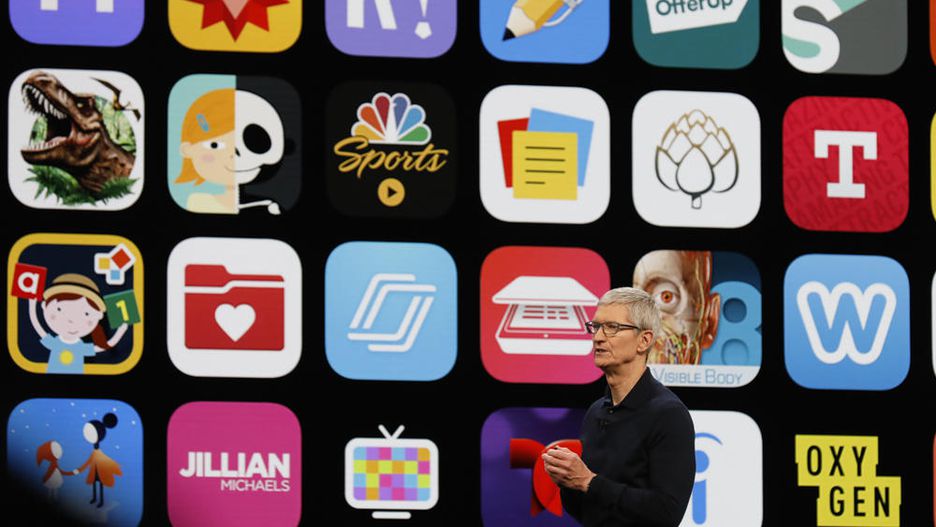A few week back we reported some of the developments we anticipated ahead of this year’s World Wide Developer’s Conference which kicked off on Monday and will be ending on Friday. In this article, we try to match what the tech giant announced on Monday with what we expected and a general overview of the first day at WWDC 2018.
No new hardware
This year’s conference won’t feature any announcements on hardware, according to the main highlights given at the event kickoff. Unlike last year where we had a few hardware announcements, this time it will only be about software.
It is most likely this September where Apple announces its annual flagship iPhone that new gadgets will make their way into the market. No clues on iPhone SE, no AirPower, no iPad X and no Mac announcements.
iOS 12
The latest mobile operating system for Apple’s devices (iPhone and iPad) was released on Monday, with the beta version available for download. The version comes to replace iOS 11 that had several bug issues, Siri upgrades and also focuses on controlling one’s phone addiction. IOS 12 will be compatible with all Apple’s devices that previously supported IOS 11, meaning that the version is more of a refinement rather than a whole new design that we expected. We look at IOS 12 and some new features it has come within depth in another article.
Mac OS-Mojave 10.14 and Mac store
Apple’s iMacs received an update of their High Sierra 10.14 also known as “Mojave”. It comes with new features such as dark mode display feature, and dynamic desktop (display adjusts according to time of the day) and gets a gallery view that’s more photo-friendly.
It also brings file media upgrades such as screen capture for video recording, ‘continuity camera’ which enables the user to directly add photos and videos taken from a live camera into current document and quicker screenshot annotation.
iOS’s default apps such as Apple News, Stocks, Voice Memos and Home also made their way to the Mac platform.
In regards to the fact concerning the integration of Mac and iOS which many of us looked forward to, Apple confirmed that there is no plan to enable Mac Apps run on iOS. On another hand, the company said it is carrying out tests that will enable iOS apps to cross to their Mac platform.
iOS is the mobile operating system for iPhones and iPads whereas as Mac OS handles what we would call Apple’s “desktop computer and laptop devices”, that is, iMac and MacBook. The two have different Application stores which Apple is trying to integrate (iOS Apps on Mac OS).
The discovery and stories feature were also included in the Mac App Store update.
WatchOS 5
The latest WatchOS comes with features aimed at ensuring one remains “active and connected” to their devices. It also comes with new health fitness support features; an activity tracker which assists one in achieving their fitness targets/goals, runner cadence and automatic workout detection.
To remain connected, it comes with a Walkie-Talkie for voice real-time messaging between users, maps, Siri shortcuts and third-party apps and WebKit to enable you access web content on your smart watch.
Other announcements
Additional announcements included, Augmented Reality (AR) support on iOS 12. Augmented reality (AR) is a form of technology which enables us to add digital elements to a live view usually through using the camera on a smartphone a typical example being snapchat filter. Apple together with Adobe introduced a new file format for this technology that is the USDZ. ARKit 2 also made its way in to replace the ARKit 1 that was introduced last year which allows developers to design augmented reality apps for iPhones.
The Apple TV got TVOS 12 like we expected and Dolby Atmos among other new features.
Google’s I/O Vs Apple’s WWDC.
Google held its I/O ’18 (keynote speech) on the 8th of May this year with big enhancements on mainly their Voice Assistant and Android Operating system which were all improved through Artificial Intelligence, machine learning and Augmented Reality tools.
Google Voice Assistant got the best scores of the day with its features such as the call-assistant but we have seen the same crossing to Siri (Apple’s voice assistant). Not only this but both company’s new operating systems have almost the same features, both come with features to control your phone addiction and more “Do Not Disturb” abilities.
Nevertheless, among common features, Google offered more capabilities for example when it came to incorporating AR, Google added this to their maps which can enable one to navigate around real time objects using their phone.

